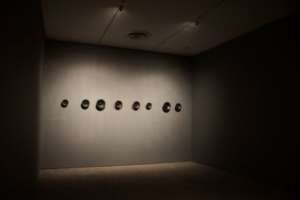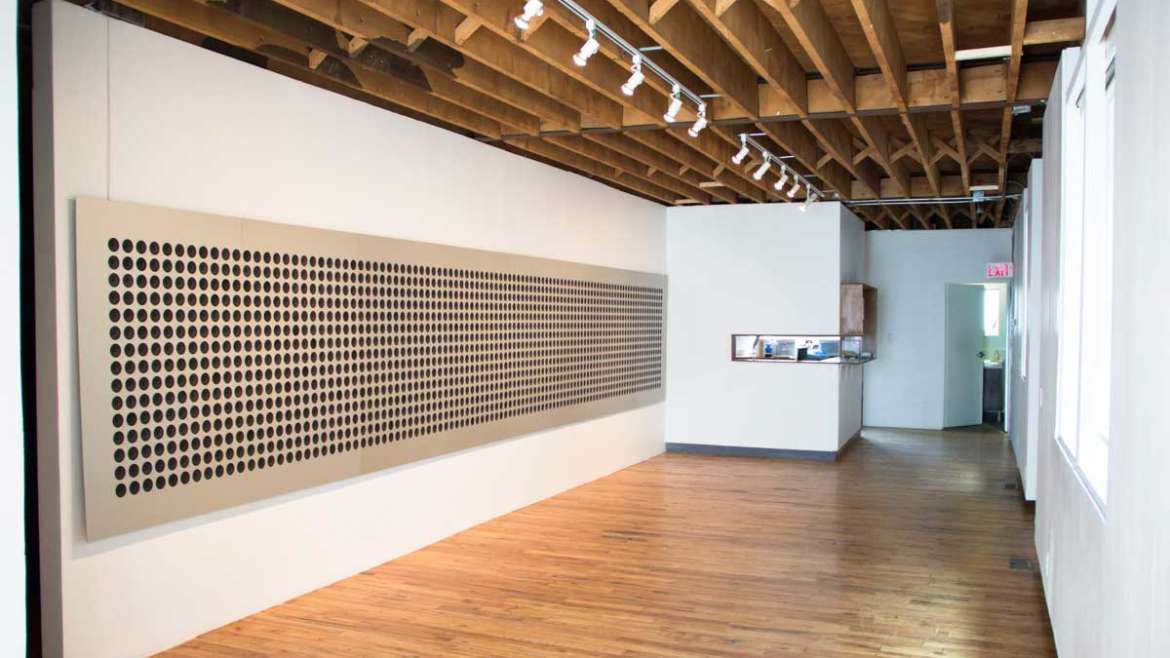The Museum of Modern Art in New York City is currently presenting Soundings: A Contemporary Score, its first major survey of sound-based art. Most of the artworks combine both sound and visual components, but some are pure audio with nothing to see at all.
As I walked through the exhibition, I began to consider and categorize the types of sounds I encountered. One type is cultural sound, created and manipulated by people, expressed in its highest form as music. Another is ambient sound, the easily ignored symphony of happenstance—like clocks ticking or distant traffic—that is always around us. There is also natural sound, such as birdcalls or rushing water. I found artworks that explored each of these aural experiences.
My favorite example of cultural sound was Haroon Mirza’s Frame for a Painting. One enters this installation through a narrow hallway lined with white foam wedges, like an insulated recording studio or a 1960s lounge. On the wall ahead is Piet Mondrian’s Composition in Yellow, Blue, and White, I from the museum’s collection, an elegantly austere arrangement of black grid lines with a few spots of primary color. Mirza has jazzed up this understated painting with a frame of pulsing blue and green LED lights that are synchronized with an electronic soundtrack. The sound emerges from two tiny speakers placed upon a wooden side table on which a blinking red bicycle light also sits. What we hear is not exactly music, but it swells and falls dramatically, has discernible rhythm, and seems ready to crystallize into a hummable pop tune at any instant. I experienced it as a humorous broadcast of the background score of consciousness, the singsong parade of half-tunes that plays behind the narration of our inner voices. The installation speaks to our current age, in which every event seems to need a logo and a theme song.

The most wistful and tragic sounds in the exhibition come from Susan Philipsz’s Study for Strings, a re-creation and deconstruction of a 1943 musical piece composed in a Nazi prison camp. It emerges from a line of speakers mounted in a darkened gray room, disjointed passages of viola and cello that call and respond, speak and fall silent.
What is the sound of an empty room? Jacob Kirkegaard’s installation AION provides an answer to that question, extracting and distilling ambient noise for our consideration. Kirkegaard set up microphones in various abandoned rooms around the Chernobyl nuclear plant, recording and re-recording an audio feedback loop. The aural nothingness of the environment accumulates and clumps together into a howling ring. A video projection of each room is shown as we hear its audio distillation. To me, the fraught Chernobyl location added an unnecessary undertone of nuclear disaster. I would be more curious to hear the secret song of an ordinary space.
Natural sounds are explored in Jana Winderen’s Ultrafield, a recording of the ultrasonic calls of bats, fish, and underwater insects pitched down to human hearing range. It is revelatory to eavesdrop on this normally imperceptible chirping communication but also humbling, as one considers the limitations of our default range of perception. There’s a limit to our sensory intake even when we’re paying full attention to our environment.
As I left the show I considered the nature of sound itself, how we don’t just “hear” in an abstract way; we literally feel sound in our bones. It is a physical process that happens in time, a stimulation of body and mind. The very transience of sound experience is what makes it so compelling. Once gone, it is not as quickly conjured back as the flash-lit snapshots of visual memory.
But maybe there is a trace: I remembered a fact about sound waves from high school physics, how they diminish with time and distance in an exponential decay that approaches but never quite reaches zero. There’s something haunting about the thought that no noise is ever completely gone, but lives on in an ever-shrinking way (mathematically, at least). It speaks to our own desires for immortality and legacy. In Soundings: A Contemporary Score, we can consider the nature of sound in the unexpected context of a visual art museum.
Soundings: A Contemporary Score, is at MoMa through November 3.
Related Article




2 Comments
Korinthia Klein
Lovely piece!
Karen Coccioli
Beautiful, thoughtful piece that opened the songs in my heart!